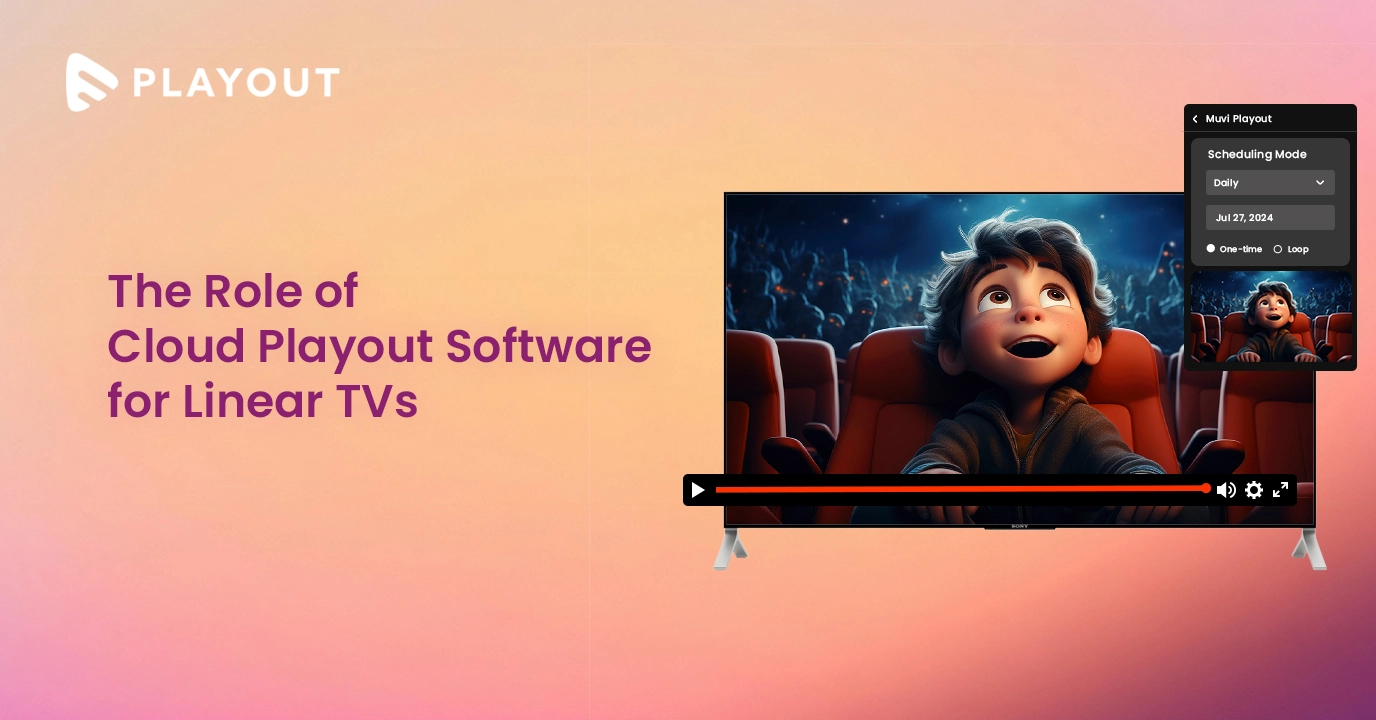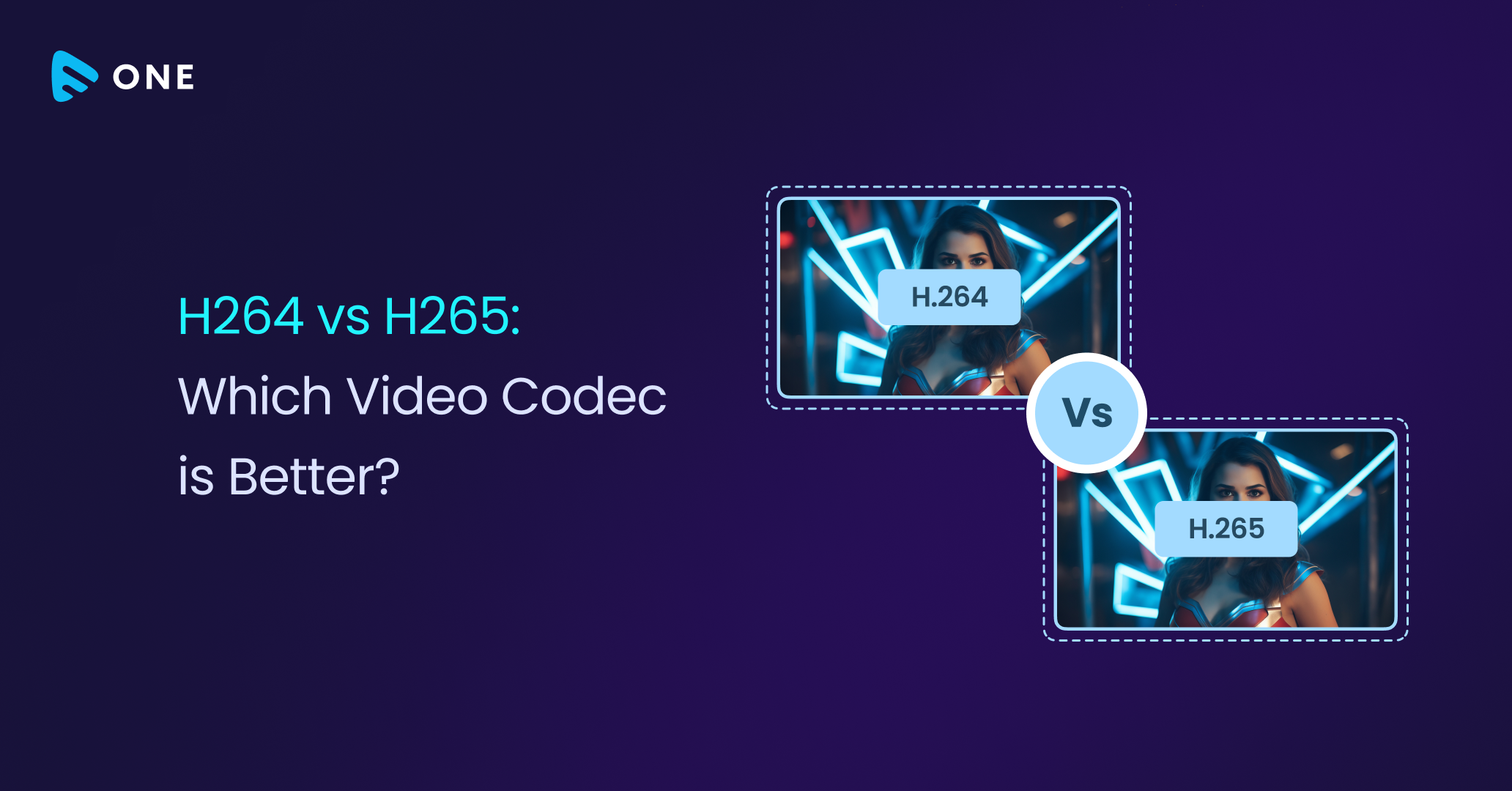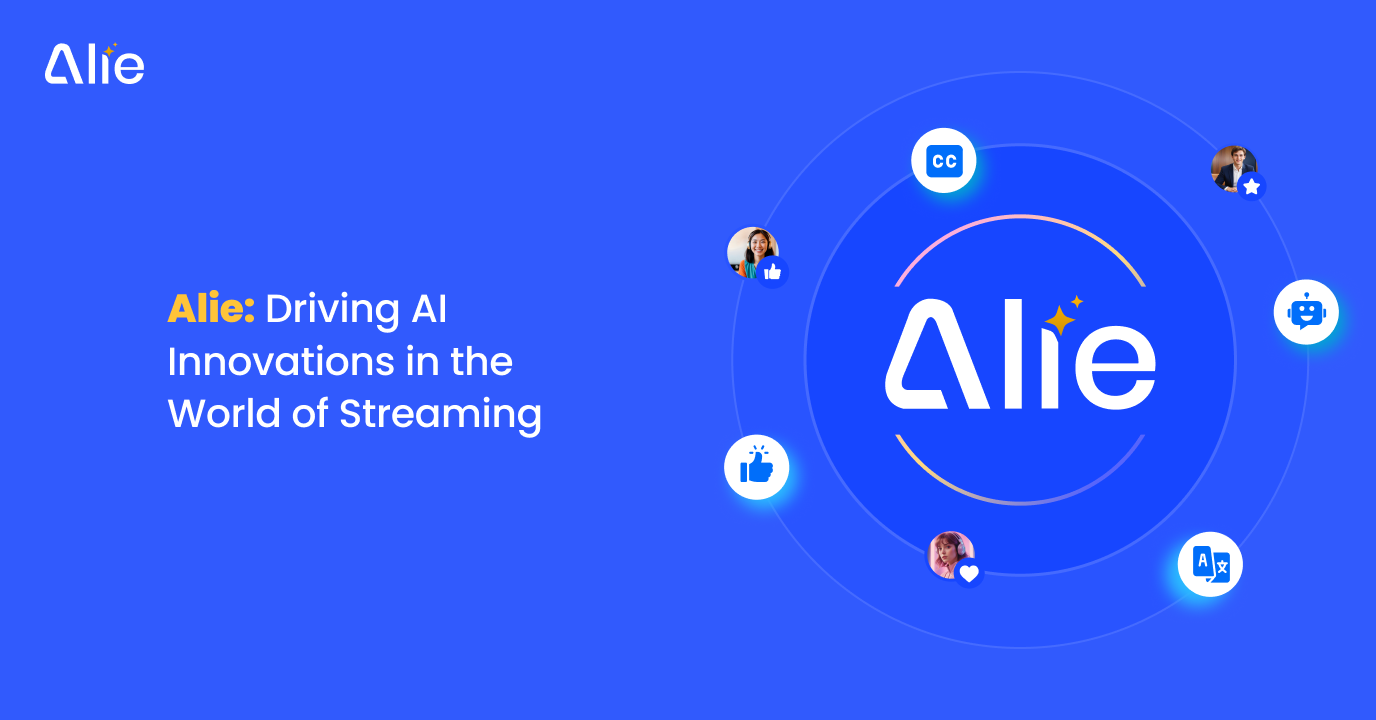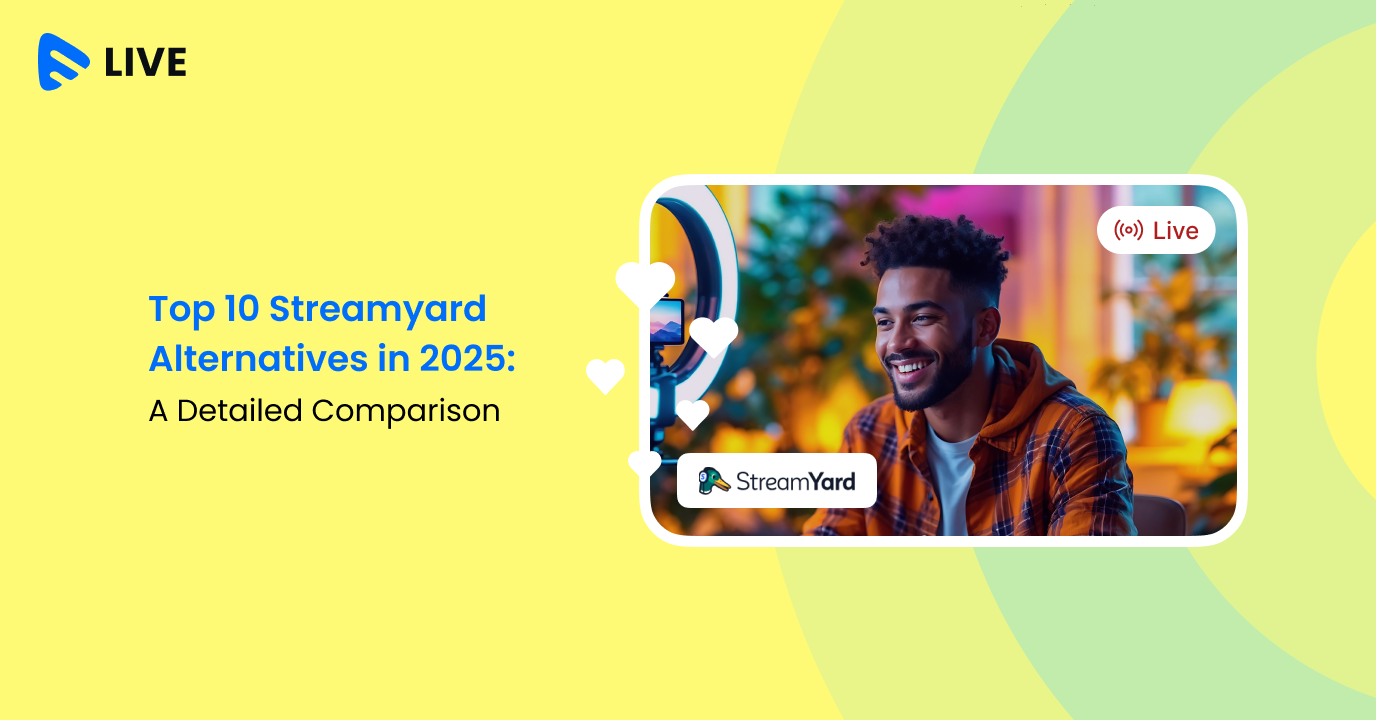Amidst the significant shifts reshaping television broadcasting, the indispensability of cloud playout software for linear TVs has come to the forefront. As traditional linear TV channels adapt to modern viewing habits and technological advancements, businesses in the broadcasting industry must recognize the key role that cloud playout software plays in ensuring seamless operations and delivering high-quality content to viewers.
From optimizing workflow efficiency to enhancing scalability and flexibility, understanding the significance of cloud-based playout solutions is paramount for broadcasters seeking to remain competitive in today’s dynamic media environment.
In this blog, we will discuss all you need to know about the role of cloud playout software for linear TVs. So, let’s start from the basics before we delve deeper!
Cloud Playout Software Overview
Cloud playout software represents a paradigm shift in the broadcasting industry, revolutionizing the way linear TV channels manage and deliver content. Cloud playout software enables broadcasters to virtualize traditional playout functions, moving them from on-premises hardware to cloud-based infrastructure. This shift offers numerous advantages, ranging from enhanced flexibility and scalability to cost savings and improved workflow efficiency.
- One of the primary benefits of cloud playout software is its scalability. Unlike traditional hardware-based playout systems, which require significant upfront investments and are often limited in capacity, cloud-based solutions allow broadcasters to scale resources dynamically based on demand. This scalability is particularly advantageous during peak viewing hours or when launching new channels, as broadcasters can easily allocate additional resources without the need for expensive hardware upgrades.
- Furthermore, cloud playout software offers unparalleled flexibility. By decoupling playout functions from physical hardware, broadcasters gain the freedom to manage and control their channels remotely from anywhere with an internet connection. This flexibility not only streamlines operations but also opens up new possibilities for remote production, collaboration, and disaster recovery.
- Cost savings are another key reason for broadcasters to adopt cloud playout software. Traditional playout infrastructures require significant investments in hardware, maintenance, and upgrades. In contrast, cloud-based solutions operate on a pay-as-you-go model, allowing broadcasters to pay only for the resources they use. This shift from capital-intensive to operational expenses can result in substantial cost savings over time, making cloud playout software an attractive option for businesses of all sizes.
- Moreover, cloud playout software enhances workflow efficiency by automating repetitive tasks and streamlining content management processes. Features such as scheduling, playlist management, and ad insertion can be automated, freeing up valuable time and resources for broadcasters to focus on creating compelling content and engaging with their audience.
The Rise of Linear TVs
One of the primary drivers behind the enduring popularity of linear TV is its inherent appeal to a broad demographic. Unlike on-demand platforms that cater to individual preferences and viewing habits, linear TV offers a curated selection of programming accessible to diverse audiences. This mass appeal ensures that linear TV channels remain relevant and influential, serving as a communal source of entertainment, news, and cultural discourse.
Additionally, linear TV benefits from the familiarity and convenience of traditional viewing habits. While on-demand services provide unparalleled flexibility and personalization, the passive nature of linear TV viewing appeals to many viewers who prefer a curated channel lineup or the serendipity of discovering new content while channel surfing. This passive viewing experience, combined with the comfort of scheduled programming, resonates with audiences seeking a sense of routine and continuity in their entertainment choices.
Furthermore, the rise of linear TVs is fueled by strategic innovations within the broadcasting industry. Technological advancements, such as the integration of cloud playout software and advanced analytics, have enabled broadcasters to enhance the quality, reliability, and interactivity of linear TV channels. These innovations not only improve the viewer experience but also empower broadcasters to optimize content delivery, monetization strategies, and audience engagement initiatives.
Linear TV continues to thrive as a preferred advertising platform for marketers seeking to reach broad audiences at scale. Despite the growing popularity of digital advertising channels, linear TV advertising offers unique advantages, including high reach, brand visibility, and engagement metrics. Advertisers recognize the value of linear TV as a trusted medium for building brand awareness and driving consumer behavior, particularly for live events, sports programming, and tentpole productions.
The Key Roles of Cloud Playout Software for Linear TVs
1. Real-time Content Scheduling
One of the fundamental roles of cloud playout software for linear TVs is enabling real-time content scheduling. Traditionally, broadcasters relied on manual scheduling processes, often involving cumbersome spreadsheets or proprietary scheduling systems. However, with cloud-based playout solutions, broadcasters gain access to intuitive scheduling interfaces that allow for the seamless creation, modification, and management of programming schedules in real-time.
Cloud playout software empowers broadcasters to respond dynamically to changing viewer preferences, program availability, and scheduling constraints. Whether it’s adjusting the timing of live events, incorporating breaking news updates, or scheduling last-minute programming changes, cloud-based scheduling tools provide broadcasters with the flexibility and agility to optimize their channel lineup and maximize viewer engagement.
2. Seamless Multi-Channel Broadcasting
Another critical role of cloud playout software is enabling seamless multi-channel broadcasting. Linear TV channels often operate multiple channels catering to different genres, demographics, or geographic regions. Managing multiple channels simultaneously can be challenging, particularly when it comes to ensuring consistent quality, reliability, and synchronization across various distribution platforms.
Cloud playout software addresses this challenge by providing broadcasters with centralized control and orchestration capabilities for multi-channel broadcasting. Through a single interface, broadcasters can manage content ingestion, scheduling, playout, and distribution across multiple channels, streamlining operations and reducing complexity.
Moreover, cloud-based playout solutions offer inherent scalability, allowing broadcasters to expand their channel lineup or launch new channels with ease. Whether it’s scaling up resources to accommodate growing viewership or experimenting with niche content offerings, cloud playout software empowers broadcasters to adapt quickly to changing market dynamics and audience preferences.
3. Dynamic Playlist Management
Dynamic playlist management is another key function enabled by cloud playout software for linear TVs. Playlists serve as the backbone of linear TV programming, dictating the sequence and timing of content playback. Traditionally, managing playlists involved manual intervention, requiring operators to update playlists periodically to reflect programming changes, ad insertion points, or promotional campaigns.
Cloud playout software automates this process, allowing for dynamic playlist management based on predefined rules, triggers, or metadata. Broadcasters can create intelligent playlists that adapt in real-time to scheduling adjustments, content availability, or audience interactions. This dynamic approach to playlist management enhances operational efficiency, minimizes errors, and ensures a seamless viewing experience for audiences.
Furthermore, cloud-based playlist management enables advanced features such as dynamic ad insertion, personalized content recommendations, and targeted audience segmentation. By leveraging metadata, viewer data, and machine learning algorithms, broadcasters can optimize playlist sequencing, content placement, and ad targeting strategies, maximizing revenue opportunities and viewer engagement.
4. Automated Advertisement Integration
Automated advertisement integration is a critical component of cloud playout software for linear TVs. Advertising revenue remains a primary source of income for broadcasters, and effective ad integration is essential for monetizing content and sustaining business operations. However, traditional ad insertion processes can be cumbersome, manual, and prone to errors, resulting in inefficiencies and revenue losses.
Cloud playout software streamlines ad integration through automated workflows, seamless integration with ad servers, and dynamic ad insertion capabilities. By leveraging metadata, audience segmentation data, and programmatic advertising technologies, broadcasters can deliver targeted ads to specific audience segments at optimal times, maximizing ad revenue and minimizing ad fatigue.
Furthermore, cloud-based ad insertion enables real-time monitoring, analytics, and optimization, allowing broadcasters to track ad performance, measure audience engagement, and adjust ad strategies accordingly. Whether it’s optimizing ad load, adjusting ad placement, or A/B testing different ad creatives, cloud playout software empowers broadcasters to maximize the effectiveness of their advertising campaigns and drive revenue growth.
5. Flexible Remote Monitoring Capabilities
Flexible remote monitoring capabilities represent a cornerstone of modern broadcasting, empowering media professionals to oversee operations and ensure seamless content delivery from anywhere in the world. With the rise of cloud-based technologies, broadcasters can leverage flexible remote monitoring solutions to monitor and manage various aspects of their broadcasting workflows, including content playout, performance metrics, and network health.
Remote monitoring solutions enable broadcasters to access real-time monitoring dashboards, analytics, and alerts from any internet-enabled device, providing insights into the health and performance of their broadcasting infrastructure. Whether it’s monitoring channel playout status, tracking viewer engagement metrics, or diagnosing network issues, flexible remote monitoring capabilities offer broadcasters unparalleled visibility and control over their operations.
Also, flexible remote monitoring solutions facilitate collaboration and communication among distributed teams, allowing media professionals to coordinate efforts, troubleshoot issues, and make informed decisions in real-time. By breaking down geographical barriers and enabling remote access to critical monitoring tools and data, broadcasters can streamline operations, improve efficiency, and enhance the quality of their content delivery.
6. Live Event Handling
Flexible live event handling solutions empower broadcasters to manage live broadcasts efficiently, from event planning and preparation to live production, playout, and post-event analysis.
Cloud-based live event handling solutions offer broadcasters the flexibility to scale resources dynamically based on the size and complexity of live events, ensuring smooth performance and uninterrupted delivery under any circumstances. Whether it’s a sports event, news coverage, or cultural festival, flexible live event handling capabilities enable broadcasters to adapt quickly to changing requirements and deliver compelling live content that engages audiences and captures the moment.
Furthermore, flexible live event handling solutions facilitate collaboration among production teams, remote contributors, and external partners, enabling seamless coordination of live broadcasts across multiple locations. By leveraging cloud-based production tools, communication platforms, and collaborative workflows, broadcasters can optimize their live event handling processes, minimize latency, and deliver immersive viewing experiences to audiences worldwide.
7. Adaptive Content Localization
Adaptive content localization is essential for broadcasters seeking to reach diverse audiences across different regions, languages, and cultures. Flexible localization solutions enable broadcasters to tailor their content delivery strategies to specific market preferences, regulatory requirements, and cultural sensitivities, ensuring that content resonates with local audiences and drives engagement.
Cloud-based content localization platforms offer broadcasters the flexibility to customize content delivery, including language options, subtitles, dubbing, and cultural adaptations, to cater to the unique preferences and expectations of diverse audiences. By leveraging advanced localization technologies, such as machine translation, speech recognition, and natural language processing, broadcasters can automate the localization process and scale their content delivery efforts efficiently.
Moreover, adaptive content localization solutions enable broadcasters to optimize content monetization strategies by tailoring advertising, sponsorship, and subscription models to specific markets and audience segments. By delivering personalized and culturally relevant content experiences, broadcasters can enhance viewer engagement, build brand loyalty, and drive revenue growth in global markets.
8. Integrated Backup Solutions
Integrated backup solutions are essential for ensuring the reliability, continuity, and resilience of broadcasting operations, particularly in the face of unforeseen disruptions, equipment failures, or network outages. Flexible backup solutions enable broadcasters to implement comprehensive backup strategies that protect critical assets, minimize downtime, and mitigate risks to content delivery.
Cloud-based backup solutions offer broadcasters a cost-effective and scalable approach to data protection, allowing them to replicate content, metadata, and playout workflows to geographically distributed backup sites or cloud storage platforms. By leveraging automated backup processes, redundant architectures, and failover mechanisms, broadcasters can ensure high availability and data integrity, even in the event of hardware failures or natural disasters.
Moreover, integrated backup solutions enable broadcasters to implement disaster recovery plans that prioritize rapid recovery and minimal data loss, ensuring business continuity and compliance with regulatory requirements. By conducting regular backup tests, monitoring backup performance, and optimizing recovery processes, broadcasters can maintain confidence in their backup solutions and protect their broadcasting operations from unforeseen disruptions.
9. Centralized Content Distribution Control
Centralized content distribution control is essential for broadcasters seeking to optimize the distribution of content across multiple platforms, devices, and delivery networks. Flexible content distribution control solutions empower broadcasters to manage content distribution workflows efficiently, from content ingestion and transcoding to delivery, monetization, and analytics.
Cloud-based content distribution control platforms offer broadcasters centralized access to distribution workflows, content libraries, and delivery parameters, enabling them to optimize content delivery strategies, maximize reach, and ensure consistent quality across all distribution channels.
By leveraging advanced distribution algorithms, content routing rules, and delivery optimizations, broadcasters can streamline distribution processes, minimize latency, and deliver high-quality content experiences to viewers worldwide.
Moreover, centralized content distribution control solutions enable broadcasters to implement content security measures, such as DRM (Digital Rights Management), watermarking, and access controls, to protect content assets from piracy, unauthorized access, and distribution. By implementing comprehensive security protocols and monitoring mechanisms, broadcasters can safeguard their content distribution workflows and protect their intellectual property rights.
10. Metadata-Rich Content Organization
Metadata-rich content organization plays a pivotal role in modern broadcasting, enabling media professionals to categorize, catalog, and manage vast libraries of audiovisual content efficiently. Metadata, which includes descriptive information about content attributes such as title, genre, cast, crew, and production details, serves as a critical asset for content discovery, navigation, and monetization.
By leveraging metadata-rich content organization strategies, broadcasters can enhance the discoverability of their content libraries, enabling viewers to find relevant content quickly and easily across various platforms and devices. Moreover, metadata facilitates personalized content recommendations, content syndication, and targeted advertising, driving engagement, retention, and revenue generation.
Cloud-based content management systems offer broadcasters scalable and flexible solutions for metadata-rich content organization, enabling them to ingest, index, and enrich metadata across their entire content lifecycle. Through automated metadata extraction, content tagging, and taxonomy management, broadcasters can streamline content organization workflows, minimize manual intervention, and ensure data consistency and accuracy.
Furthermore, metadata-rich content organization enables broadcasters to unlock the value of their content assets through advanced analytics, content insights, and audience intelligence. By analyzing metadata patterns, viewer behavior, and content consumption trends, broadcasters can make data-driven decisions regarding content acquisition, programming strategies, and audience engagement initiatives, maximizing the return on investment for their content portfolios.
11. Efficient Resource Allocation
Cloud-based resource allocation solutions offer broadcasters flexible and scalable tools for dynamically provisioning, managing, and optimizing resources across their broadcasting workflows.
By leveraging efficient resource allocation strategies, broadcasters can maximize operational efficiency, minimize costs, and adapt quickly to changing demands and market conditions. Whether it’s allocating compute resources for transcoding and encoding tasks, bandwidth for content distribution, or personnel for production and playout operations, efficient resource allocation ensures that broadcasters can meet performance objectives and service level agreements effectively.
Cloud-based resource allocation solutions enable broadcasters to scale resources up or down dynamically based on workload fluctuations, seasonal trends, or special events, ensuring that they can handle peak traffic and demand spikes without overprovisioning resources. Moreover, by adopting pay-as-you-go pricing models and consumption-based billing, broadcasters can optimize resource utilization and minimize unnecessary expenses, improving the overall cost-effectiveness of their broadcasting operations.
Furthermore, efficient resource allocation enables broadcasters to enhance collaboration, productivity, and innovation across their organizations. By aligning resource allocation with strategic objectives, project priorities, and performance metrics, broadcasters can empower teams to focus on high-impact initiatives, accelerate time-to-market, and drive continuous improvement in broadcasting workflows and processes.
12. Streamlined Playout Workflow
By leveraging streamlined playout workflows, broadcasters can improve operational efficiency, reduce human error, and enhance the quality and consistency of their content delivery. Whether it’s managing complex scheduling requirements, integrating live events and ad breaks, or handling multi-platform distribution, streamlined playout workflows enable broadcasters to automate repetitive tasks, minimize manual intervention, and maximize the use of their resources.
Cloud-based playout solutions offer broadcasters centralized control and visibility over their playout operations, enabling them to monitor, manage, and troubleshoot playout workflows in real-time. Through intuitive dashboards, alerts, and reporting tools, broadcasters can gain insights into playout performance, detect anomalies and issues, and take proactive measures to ensure uninterrupted content delivery.
Furthermore, streamlined playout workflows facilitate collaboration and integration with third-party systems, such as traffic and billing systems, content management platforms, and ad insertion servers. By leveraging open APIs, standards-based protocols, and interoperability frameworks, broadcasters can seamlessly exchange data and metadata between different systems, streamline workflow integration, and enhance the overall efficiency and effectiveness of their playout operations.
13. Enhanced Redundancy Measures
Enhanced redundancy measures are essential for broadcasters seeking to ensure the reliability, availability, and resilience of their broadcasting operations in the face of equipment failures, network outages, or other disruptions. Cloud-based redundancy solutions offer broadcasters scalable and robust tools for implementing redundant architectures, failover mechanisms, and disaster recovery strategies.
By leveraging enhanced redundancy measures, broadcasters can minimize the risk of downtime, data loss, and service disruptions, ensuring continuous content delivery and uninterrupted viewer experiences. Whether it’s implementing redundant playout servers, backup storage solutions, or redundant network connections, enhanced redundancy measures enable broadcasters to mitigate single points of failure and protect against unforeseen events.
Cloud-based redundancy solutions offer broadcasters flexible and cost-effective options for implementing redundancy at various levels of their broadcasting infrastructure, including content storage, processing, and distribution. By leveraging cloud-based redundancy services, broadcasters can replicate content and metadata across multiple geographic regions, data centers, or cloud providers, ensuring geographic diversity and data resilience.
Furthermore, cloud-based redundancy solutions enable broadcasters to implement automated failover mechanisms and disaster recovery plans that prioritize rapid recovery and minimal data loss. By leveraging automated monitoring, alerting, and recovery tools, broadcasters can detect and respond to incidents quickly, minimize downtime, and restore service operations to normalcy with minimal disruption to viewers.
14. Robust Error Handling Mechanisms
Robust error handling mechanisms are crucial for ensuring the reliability and continuity of broadcasting operations, particularly in dynamic and high-pressure environments. In broadcasting, errors can occur due to various factors, including technical glitches, network issues, equipment failures, and human error. To mitigate the impact of errors and maintain seamless content delivery, broadcasters rely on robust error handling mechanisms that detect, diagnose, and resolve issues promptly.
a. Error Detection and Monitoring
Robust error handling mechanisms encompass a range of tools and processes designed to detect errors and anomalies in real-time. This includes continuous monitoring of broadcasting equipment, network infrastructure, and playout workflows using automated monitoring systems and sensors.
By monitoring key performance indicators (KPIs), such as signal strength, bitrate, latency, and error rates, broadcasters can identify potential issues before they escalate and impact content delivery.
b. Automated Alerting and Notification
In addition to error detection, robust error handling mechanisms include automated alerting and notification systems that notify relevant stakeholders when errors occur. This may involve sending alerts via email, SMS, or push notifications to broadcasting engineers, operators, and technical support teams, ensuring timely response and intervention.
By implementing automated alerting mechanisms, broadcasters can minimize response times, mitigate downtime, and prevent disruptions to content delivery.
c. Fault Tolerance and Redundancy
Robust error handling mechanisms also incorporate fault tolerance and redundancy measures to ensure continuity of operations in the event of failures or outages. This includes deploying redundant hardware components, backup systems, and failover mechanisms to maintain service availability and data integrity.
By implementing redundant architectures, broadcasters can minimize the impact of hardware failures, network outages, and other disruptions on content playout and delivery.
d. Error Resolution and Recovery
When errors occur, robust error handling mechanisms facilitate efficient error resolution and recovery processes to minimize downtime and restore service quickly. This may involve automated recovery procedures, manual intervention by broadcasting engineers, or a combination of both, depending on the nature and severity of the error.
By implementing predefined escalation paths, troubleshooting guides, and recovery playbooks, broadcasters can streamline error resolution processes and ensure consistent response across different scenarios.
15. Advanced Analytics Integration
Advanced analytics integration plays a vital role in optimizing broadcasting operations, enhancing performance, and driving data-driven decision-making. By leveraging advanced analytics tools and techniques, broadcasters can gain actionable insights into audience behavior, content performance, operational efficiency, and market trends, empowering them to optimize content delivery, monetization strategies, and audience engagement initiatives.
a. Audience Insights and Behavior Analysis
Advanced analytics integration enables broadcasters to gain deep insights into audience behavior, preferences, and engagement patterns. By analyzing viewer metrics, such as viewing habits, content consumption patterns, and engagement metrics, broadcasters can identify trends, preferences, and audience segments, allowing them to tailor content offerings, scheduling, and advertising strategies to better meet viewer needs and preferences.
b. Content Performance Optimization
In addition to audience insights, advanced analytics integration enables broadcasters to optimize content performance and programming strategies. By analyzing content performance metrics, such as viewer ratings, viewer retention, and content popularity, broadcasters can identify high-performing content, trends, and programming gaps, allowing them to optimize content scheduling, acquisition, and production strategies to maximize viewer engagement and retention.
c. Operational Efficiency and Resource Optimization
Advanced analytics integration also enables broadcasters to optimize operational efficiency and resource allocation. By analyzing operational metrics, such as playout efficiency, resource utilization, and workflow bottlenecks, broadcasters can identify areas for improvement, streamline workflows, and optimize resource allocation to enhance productivity and reduce costs.
d. Predictive Analytics and Forecasting
Furthermore, advanced analytics integration enables broadcasters to leverage predictive analytics and forecasting models to anticipate future trends, demand patterns, and audience behavior. By analyzing historical data, market trends, and audience demographics, broadcasters can generate predictive models and forecasts that inform content acquisition, scheduling, and advertising strategies, enabling them to stay ahead of the curve and capitalize on emerging opportunities.
To Conclude
Undoubtedly, cloud playout software in linear tvs offers broadcasters unparalleled flexibility, scalability, and efficiency in content delivery, ensuring seamless operations in an increasingly digital environment.
Businesses in this industry must recognize the role of cloud playout software in driving innovation and staying competitive. Embracing this technology enables broadcasters to adapt to changing viewer preferences, optimize resource allocation, and deliver compelling content experiences to global audiences. With the future of broadcasting leaning heavily on cloud-based solutions, awareness and adoption of cloud playout software are imperative for businesses to thrive in the dynamic media landscape ahead.
Embracing solutions like Muvi Playout, a cloud playout software for linear TV and FAST channels, offers broadcasters a seamless way to manage their cloud-based channels, optimize scheduling, and deliver engaging content experiences to audiences worldwide. With features like EPG, scheduler, and HLS feeds included, Muvi Playout empowers broadcasters to launch customizable online TV channels effortlessly, expand revenue streams, and build a loyal audience with minimal time and effort. Take a 14-day free trial today to get started!

















Add your comment